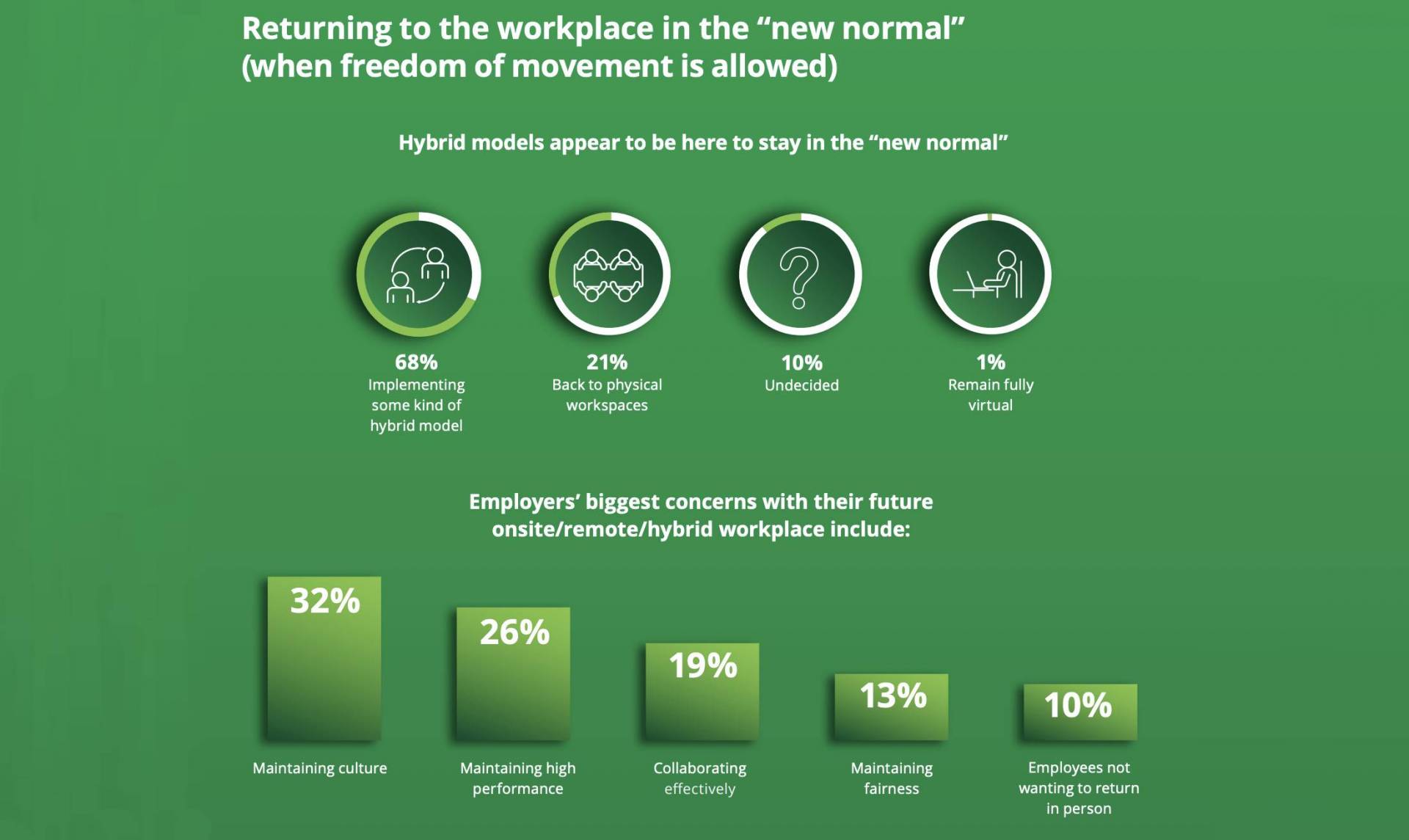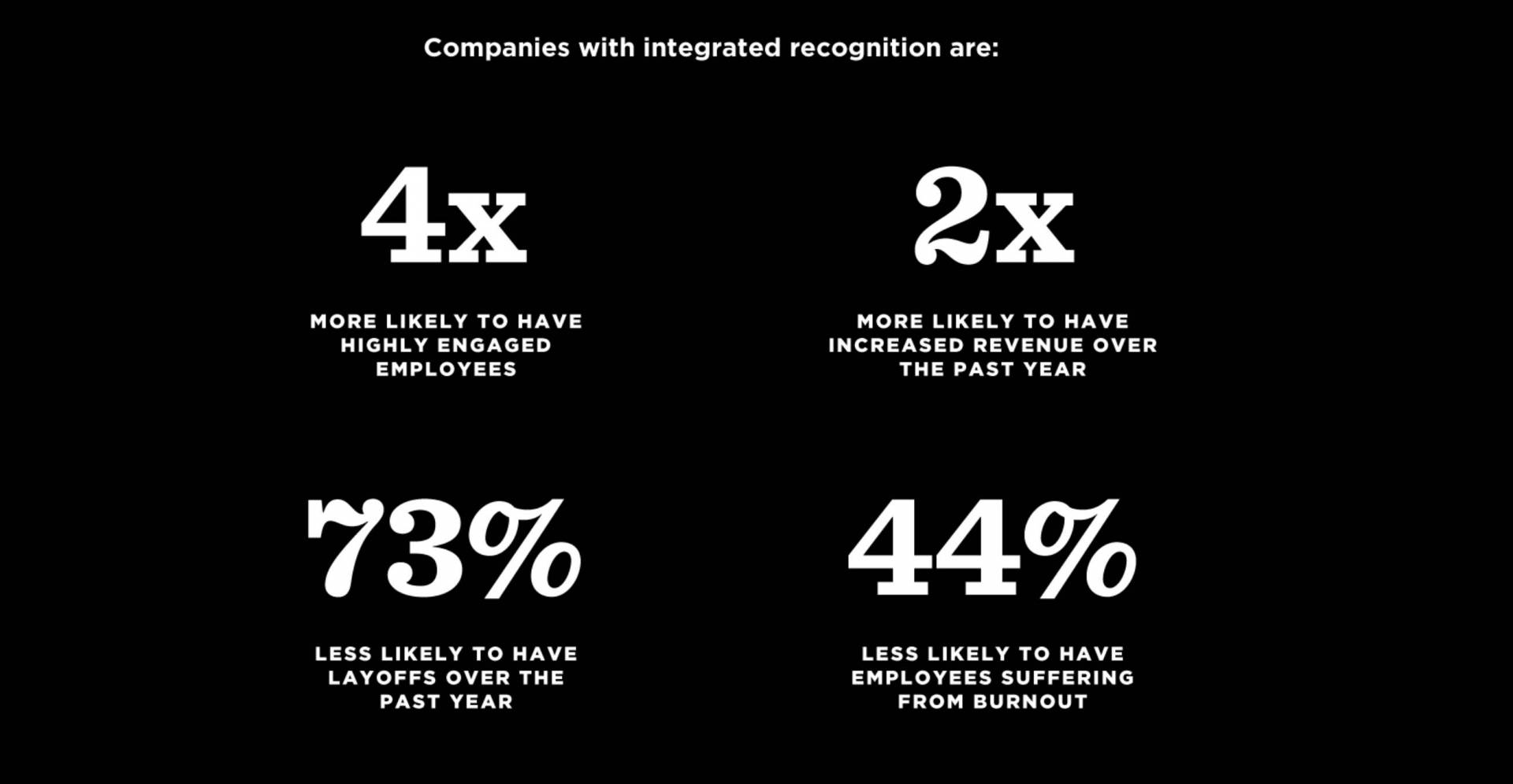

There isn’t a company around today that hasn’t faced changes in the past four years. Even those that successfully dominated the complexities of building a workplace culture during the global pandemic now face new issues with hiring, supply chain constraints, and inflation. In this article, discover how you can become a company culture champion even in a hybrid or completely remote environment. After all, with 68% of executives stating that they plan to offer a combination of on-site and remote work, building a culture that transfers across all workspaces is even more critical.
Ready to discover how you can maintain an engaging culture and drive productivity ? Let’s dive in!
Key takeaways:
- Company culture are shared values, beliefs, and attitudes that foster internal growth
- Schedule meetings to gather regular employee feedback to understand how you can better improve morale and provide better offerings
- Consider giving employees professional development opportunities and flexible work schedules to compete with other employers


Source: Deloitte
What is Company Culture?
Your company culture is a shared set of values or beliefs that help guide your internal organization, policies, and recruitment efforts. As a living ecosystem for your company, it shapes how your employees interact with each other and build your brand reputation.
Your main priority is to give your customers a great experience and deliver exceptional products or services. To achieve this, you need to develop a solid cultural foundation that guides your employees in interacting with customers and producing innovative outcomes.
Failure to develop a positive culture often creates a toxic work environment with low productivity, high turnover, and revenue loss. In fact, 72% of organizations report that fostering a healthy culture drives successful initiatives and allows employees to perform more effectively.
Workplace Culture Don’ts to Steer Away From
Whether you’re an established business or a thriving startup, culture should be top of your priority list. However, it’s easy to get caught in the day-to-day when you have upcoming deadlines or significant revenue goals that you need to meet.
Here are a few workplace culture ‘don’ts’ that you want to avoid:
- Encouraging your staff to work through lunch or not offering regular breaks
- As a senior leader, rescheduling one-on-ones often to fit your personal schedule
- Keeping employees and managers around even if they’re unwilling to engage with the culture
- Limiting your employee’s ability to pursue passions in and outside the workplace
- Asking your human resources department to hire for culture fits, instead of adds
Developing cultural values for everyone to adhere to will make it easier for you to notice when company morale is low. To help avoid these common mistakes, consider sending employees quarterly anonymous feedback surveys to collect honest responses on what’s going well and what you can improve.
Refreshing Your Company Culture in 2022
A strong culture often stems from positive recognition and human connection. Whether you are trying to boost your corporate culture or small business culture For example, 103% of workers are more likely to feel supported by organizations if they are recognized. As we look towards 2022, leaders need to refresh workplace culture and keep employee engagement high.


Source: O.C. Tanner
Here’s how you can refresh your culture and prepare for the new work era:
1. Invest in More Professional Development Opportunities
Your employees want to feel valued. If you’re unable to show them that you appreciate their efforts, they’ll most likely start looking for new job opportunities. A great way to show that you care is by investing in their professional and personal development.
Personal development is a win-win — not only does the employee have the opportunity to sharpen their skill set, but they will also be more likely to apply those skills to their current job role. Professional development also improves their loyalty to your company, which allows you to promote internally and save overhead costs in the future.
[Related: Fostering a Development Culture for a Remote-First Workplace ]
2. Build Better Meeting Protocols
Have you ever caught yourself thinking, “this meeting could be an email”? To avoid meeting fatigue and wasting productivity time, consider developing a more connected culture through efficient meeting protocols that help set expectations for the entire company.
A few best practices include the following:
- Only include those closest to the project in the meeting instead of a whole team
- Follow a meeting agenda that consists of an objective and action items for the next steps
- Ensure that meetings don’t go over allotted time slots
- Practice communication best practices like active listening and hand raising, which is especially important for video meetings
While these seem like small measures, it allows everyone to have a voice and fosters more innovation, creativity, and inclusion within your culture.
3. Provide Remote and Hybrid Work Options
With 40% of employees agreeing that they would quit if their job didn’t offer flexible work options, many businesses have shifted their ‘on-site only’ mindset to offering remote and hybrid environments. If you want to keep your current employees and attract top talent, provide more balance and flexibility in your culture.
Employees can work asynchronously and synchronously with a flexible work schedule depending on their project needs and preferences. Additionally, teams can find a better balance for times that require more ‘deep focus’ and those that need more creative collaboration. Culturally, these different models allow workers to build connections and develop solutions together.
4. Create a Repeatable Onboarding Process
The competition to hire talented people is tough right now. When your recruitment teams kick off initial hiring conversations, make sure they put your culture at the forefront of the discussion and tell them what collaboration looks like at your company.
Once you hire a person, develop an onboarding process that integrates the new employee in the company ethos. Here are a few best practices to help new hires belong:
- Assign each new employee a mentor in leadership to walk them through all your cultural highlights
- Encourage teams to come into the office together to work on projects
- Listen to their professional goals and ensure they understand the career path
- Provide a document of company values, resources, and pieces of training to help them feel ready
Building a Positive Culture for Your Company Next Year
While your employees are your company’s most important assets, they now have more options and flexibility than ever before. To make sure all your staff members feel engaged and appreciated at your company, it’s essential to reevaluate your company culture and prioritize it in the new year.
Ready to become a culture champion and build a positive work culture? Get in touch with me today to develop your strategy!
Cover Image Credit: Nataliya Vaitkevich; Pexels; Thank you!











Michael Brenner
Michael Brenner is founder and CEO of Marketing Insider Group. He helps with weekly content that helps convert and win new customers.